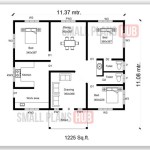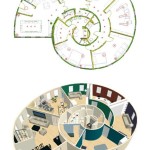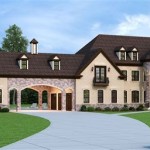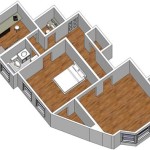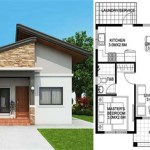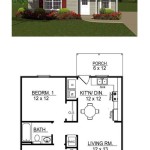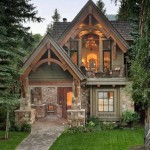Federal Style House Plans: A Comprehensive Guide
The Federal style, also known as the Adam style, is a distinct architectural movement that emerged in the United States during the late 18th and early 19th centuries. Characterized by its elegance, symmetry, and neoclassical influences, the Federal style reflects the spirit of the newly formed nation and its embrace of classical ideals. This architectural style continues to inspire contemporary homeowners seeking to infuse their living spaces with a timeless aesthetic. This guide explores the defining characteristics of Federal style house plans, their historical significance, and the key elements to consider when designing or adapting this architectural tradition to modern living.
Key Features of Federal Style Home Plans
Federal style house plans are readily identifiable by their distinct characteristics. These features contribute to the elegant simplicity and refined aesthetic that defines the style:
- Symmetry and Balance: Federal homes often feature a symmetrical facade with a central entrance, balanced by identical windows and doors on either side. This emphasis on symmetry creates a sense of harmony and order.
- Rectangular Floor Plan: The floor plan of a Federal house typically follows a rectangular configuration. This geometric layout creates spacious and well-defined rooms, often with a formal dining room, parlor, and bedrooms.
- Palladian Windows: These iconic arched windows, inspired by the Italian architect Andrea Palladio, are a signature element of Federal style homes. Palladian windows often feature a central arched section flanked by two smaller rectangular windows.
- Classical Details: Federal homes incorporate elements of classical architecture, such as columns, pilasters, and pediments. These decorative details enhance the architectural vocabulary and add a touch of grandeur.
- Simple Rooflines: Federal homes typically feature a gable roof, with a steep pitch and a prominent cornice. The simplicity of the roofline complements the elegant lines of the house.
- Use of Brick and Wood: Brick was a common building material for Federal homes, particularly in urban areas. In rural settings, wood was frequently used, often with painted finishes to create a sophisticated look.
Historical Context: The Federal Style and Its Roots
The Federal style emerged in the United States during a period of significant social and political transformation. The newly established nation, seeking to define its own identity, looked to classical architecture as a source of inspiration. The style draws heavily from the works of English architect Robert Adam, who revived interest in classical design during the 18th century. Adam's elegant and refined style, characterized by symmetry, proportion, and decorative elements, resonated with the aspirations of the American elite.
Federal style homes were often built for wealthy merchants, politicians, and landowners who sought to express their social status and patriotism through their architecture. The style's prevalence during the early republic reflects the nation's desire to create a sense of order, stability, and unity. Prominent examples of Federal style homes can be found in major cities throughout the United States, such as Boston, Philadelphia, and Charleston.
Designing and Adapting Federal Style Home Plans for Modern Living
While the Federal style is rooted in the past, its timeless elegance and practical design elements continue to appeal to contemporary homeowners. Adapting and incorporating Federal style elements into modern house plans allows for a unique blend of historical charm and contemporary functionality.
- Open Floor Plan: Modern living often favors open floor plans that promote flow and social interaction. While maintaining the basic rectangular layout, contemporary interpretations of Federal style homes can incorporate larger, open-plan spaces. These spaces can combine living, dining, and kitchen areas while preserving the sense of symmetry and proportion that defines the style.
- Modern Materials: While brick and wood remain classic choices, modern materials such as stucco, stone, and metal can be used to create a contemporary twist on the Federal style. These materials can be selected to complement the surrounding landscape and architectural context.
- Energy Efficiency: Contemporary design principles emphasize energy efficiency and sustainability. This can be integrated into Federal style house plans by incorporating features such as insulated walls, energy-efficient windows, and solar panels.
- Personalized Touches: While the Federal style prioritizes symmetry and balance, there is room for personal expression. Incorporating modern furniture, artwork, and lighting can further personalize the space and create a unique blend of historical and contemporary influences.
Federal style house plans represent a bridge between the past and the present. By embracing the timeless elegance and practicality of this architectural movement, homeowners can create living spaces that are both beautiful and functional, reflecting a rich heritage while embracing modern sensibilities.

House Designs Your Dream Home Design Is Here
:max_bytes(150000):strip_icc()/1375tideland_4c_ext-364758e42ee5467a8500d2be5ec8ba25.jpg?strip=all)
Top 14 Best Ing House Plans

House Plans Find Your Perfect Plan

Farmhouse Style House A Timeless And Classic Home Redfin

26 Architectural House Styles That Built America
:max_bytes(150000):strip_icc()/lowcountry-farmhouse-b47ff5abc5fb41e4a825f9ca4afe5ef2.jpg?strip=all)
Top 14 Best Ing House Plans

74 Beautiful Vintage Home Designs Floor Plans From The 1920s Americana

25 Popular Types Of Houses And Home Styles House Architecture Exterior

Modern Farmhouse Plans Custom New Homes Built On Your Land
:max_bytes(150000):strip_icc()/SL-2052-ramble-farmhouse-8a293bf41df64397826443ce4dfcc6d2.jpg?strip=all)
20 Farmhouse Plans That You Ll Want To Call Home
Related Posts

